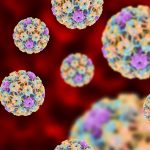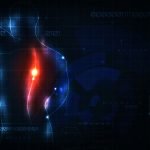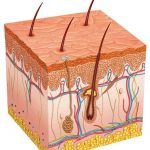Botanical Therapies for Headaches
Jillian Stansbury, ND
Headache Pathophysiology and Botanical Considerations
Headache is one of the most common medical complaints treated in general clinical practices and is a significant public health burden, in terms of suffering, disrupted family interactions, and lost work and wages. Headaches can have numerous underlying causes, such as stress, hormonal, vascular, allergic, dysglycemia, exhaustion, chronic constipation, and toxemia. It is the responsibility of clinicians to seek out the underlying cause so as to really cure the condition, and not just provide habitual pain relief.
When headaches are due solely to stress and tension, herbal nervines, relaxants, and lifestyle approaches are among the most effective therapeutic considerations. When headaches are associated with the menstrual cycle or begin at menopause, hormonal balancing agents, including alteratives, may be used continuously for several months and reduced as the headaches improve. When headaches are due to circulatory congestion or acute episodes of vascular reactivity and inflammation, consider herbal “blood movers” and/or agents known to reduce inflammatory processes within the blood itself, as well as the blood vessels walls. The most well-studied migraine herbs, Petasites and Tanacetum, fall into this category. When headaches are associated with blood sugar imbalance, fatigue, or endocrine (adrenal/thyroid/reproductive) imbalances, treating the underlying endocrine disorder is obviously appropriate. Constant dull headaches may also be a sign of general portal and liver congestion or toxemia. When associated with chronic constipation and digestive symptoms or gallstones, liver herbs and digestive support may improve headaches more than any other approach. Food allergies and exposure to mold and toxic environments may also result in chronic headaches. Antiinflammatory diets and an investigation into work and home environments may be warranted in such cases. A thorough history and exam can typically help diagnose the specific type of headache and suggest the most appropriate herbal treatment. Migraines are not hard to diagnose, and are usually impossible to miss due to the characteristic visual disturbances, acute intense onset, accompanying nausea and vomiting, and often a marked spot location or one-sidedness. A combination of addressing underlying contributors (eg, stress, hormonal influences, vascular inflammation) and using specifically indicated herbs, such as listed below, will often alleviate chronic migraines.
Tension headaches – are the most common type of headache and occur in nearly everyone at least once in their lifetime. As the name implies, this type of headache occurs in association with muscle tightness in the neck, shoulders, and scalp muscles. Tension headaches can occur due to underlying emotional tension that triggers the muscular tension, or can result from a simple muscular spasm due to poor muscle tone or strain on the neck muscles such as from sitting at the computer all day. Some patients may also unconsciously clench their teeth, grimace, hold their breath, and/or hold significant tension in their neck, back and shoulders as they work and think. Setting a timer as a reminder to get up and stretch and do neck rolls can be preventative for those with chronic muscle tension headaches. Muscle tension is also more likely to occur in weak muscles; thus, prescribing general exercise and specific isotonic or other muscle strengthening maneuvers to strengthen the trapezius and other neck and back muscles will reduce the tendency to develop acute muscle tension and spasm.
Migraines – are a neurovascular phenomenon that can occur frequently, such as several times a week, or infrequently, such as only once or twice a year. The peak incidence for migraines is between 25 and 55 years of age, affecting 18% of women and 6% of men. About one-third of migraine sufferers experience an “aura,” with transient visual and sensory disturbance.
Researchers believe that migraines may reflect a state of neurological hyperresponsiveness, and many inflammatory cascades and enzyme systems are being elucidated.[1] As migraines tend to run in families, genetic predisposition has long been suspected but only recently have ion channel transport mutations been identified,1 paving the way for new, more effective drug therapies for migraine sufferers. A particular subset of migraines, familial hemiplegic migraine, is associated with mutation in genes that regulate calcium channels. Further research indicates that glia play a role beyond myelination, such as helping to maintain homeostasis in neurons. Glia are also being targeted to reduce hyperresponsiveness in the cerebrum. A peptide, the so-called calcitonin-gene-related peptide (CGRP), has also been widely implicated in migraines. CGRP plays a role in the neuromodulation of nociception; more recently, it has been shown to be released from meningeal neurons and influence cerebral vasodilation, inflammation, and sensitization of the meningeal nociceptors.2
A variety of inflammatory mediators, such as mast cell release of histamine and serotonin, substance P and calcitonin gene-released peptides, and beta-adrenergic phenomena all have been shown to be involved in the pathogenesis of migraines. Various agents that bind serotonin receptors have been found to allay pain for many migraine sufferers. Serotonin agonists may also act as at presynaptic neuronal receptors, affecting the release of calcitonin and substance P. There are at least 6 different subtypes of serotonin receptors; different individuals’ migraines may be associated with a variety of serotonin-mediated, allergic, or inflammatory triggers.
For highly allergic individuals, as evidenced by chemical sensitivity, hay fever, hives, asthma, or eczema, mast cell reactivity with histamine release is probably involved in triggering their migraines. For these individuals, reducing allergic reactivity with antioxidants, mast cell stabilizers, and essential fatty acids may reduce the frequency of migraines over time.
For other people, foods or tryptophan/serotonin imbalance in the body may be the primary initiators of inflammatory cascades that result in migraine, more so than histamine. For example, it has been commonly noted that tyramine-containing foods, such as aged cheese and red wine, can trigger migraines in some individuals.
Tyramine, Octopamine and Migraines
Tyramine is a naturally occurring, non-essential amino acid found in the highest concentrations in aged cheese, some cured meats, and wine. Tyramine is also synthesized in the liver and gastrointestinal mucosa from the amino acid, tyrosine, via the enzyme tyrosine decarboxylase. The presence of tyramine in the bloodstream appears to induce norepinephrine release, thereby increasing sympathetic nervous system activity. Tyramine can also be converted into octopamine within synaptic vesicles via dopamine B-hydroxylase. Octopamine is sometimes referred to as a “false transmitter” because it fills the vesicle and displaces norepinephrine, ultimately leading to vasodilation and hypotensive effects as the sympathetic synapses are inhibited.3 In some susceptible migraine sufferers, this effect may lead to excessive cerebral dilation, thus triggering vasocongestion and migraine.
The Role of Amino Acids and Catecholamines in Headaches
The catecholamines, adrenaline (epinephrine), noradrenaline (norepinephrine), and dopamine are the prime neurotransmitters involved in mood and basic cognition, and may also play a role in the etiology of some headaches. During activation of the sympathetic nervous system in response to stress or physical demands, adrenaline and noradrenaline promote peripheral vasoconstriction and coronary vasodilation. Many headache sufferers report worse symptoms when under stress or when affected by amphetamines such as caffeine or ephedrine. As a result, migraines may improve using sympatholytics (inhibitors of sympathetic activity), due to favorable hemodynamic effects. Sympatholytic agents include herbs that temper adrenaline output from the adrenal glands, such as the adaptogens, Panax, Eleutherococcus, Glycyrrhiza, and others. Rauwolfia is not considered an adaptogen; however, its alkaloid, reserpine, may reduce the concentration of noradrenaline in neural synapses and benefit those with adrenaline-driven symptoms. Reserpine disrupts the ability of the neural synaptic vesicles to store and transport dopamine and norepinephrine, and allows them to be readily degraded by MAO.4
Any agent that alters the synthesis of the catecholamines can act as sympatholytic. Clinical experience has taught us that blocking the tyrosine hydroxylase enzyme is the most effective, as it the rate-limiting step. Methyltyrosine, also called metyrosine, is one such enzyme inhibitor. Carbidopa is noted to inhibit aromatic L-amino acid decarboxylase, and disulfiram in noted to inhibit dopamine beta-hydroxylase. However, these agents are less effective than metyrosine for reducing general catecholamine synthesis, and are more effective in Parkinson’s disease and other conditions where affecting dopamine in the peripheral tissues is desired.
Because the synthesis of adrenaline and noradrenaline involves amino acids and specific enzymes, various agents that affect these pathways may impact their production, as well as the treatment of migraines. L-tyrosine is converted to L-dopa by tyrosine hydroxylase. Dopa is then converted to dopamine by aromatic L-amino acid decaroboxylase. Dopamine can also be transformed into norepinephrine by dopamine beta-hydroxylase. This final step occurs in the noradrenergic neurons in both central and peripheral nervous systems, as well as in the chromaffin cells of the adrenal medulla and enterochromaffin cells of the intestinal mucosa. Hence, sympathetic noradrenaline is released into both synaptic pathways and the blood. The enzyme PEA (phenylethanolamine-N-methyltransferase), which is located in the adrenal chromaffin cells and orchestrates the conversion of noradrenaline into adrenaline, might be blocked by drugs such as phentoalamine.
Summary of Therapies for Various Headache Presentations
All types of Headaches
- Analgesics – Aspirin, acetaminophen, and ibuprofen are only appropriate for occasional use due to potential renal and hepatic damage with chronic use. These pain relievers may also worsen “leaky gut” and actually increase the occurrence of headaches in those with toxemia and allergic phenomena.
- Salicylate Herbs – Salix (willow), Actaea (black cohosh) can be helpful acutely, but unless specifically indicated, may do little to reduce chronic headaches. Thus, acute and chronic formulas may be useful in some cases to take advantage of the anodyne effects of these herbs, but preferably complement deeper-acting long-term formulas to correct hormonal imbalance, improve vascular inflammation, etc. Salicylate-containing botanicals include the various willow species (Salix species), Filipendula and Actae racemosa .
- Sympatholytics – Drugs that reduce sympathetic stimulation of the vascular smooth muscle are commonly used to reduce blood pressure, but may also be useful for migraines and heart palpitations where reducing stress-induced vascular tension may be helpful. Reserpine in Rauwolfia serpentina falls in this category, as do various drugs such as atenolol, propanolol, and metropolol. In addition to Rauwolfia, herbs in this category include Leonurus and Tilia and may be key herbs in formulas for those with chronic headaches concomitant with stress, hypertension, and possible tachycardia and panic attacks.
Muscle Contraction Headaches
- Muscle Relaxants – Valeriana stichensis, Passiflora edulis, Piper methysticum , Piscidium, Corydalis
- Muscle Relaxing Minerals – Calcium, magnesium, potassium, silica
- Physical Therapies – Massage, craniosacral, chiropractic, muscle strengthening exercises
Migraines
- “Triptans” – This category of drugs represents the current “gold standard” in migraine therapy; nonetheless, triptans are effective in only 30-70% of users, depending on the criteria of “success”. Triptans are serotonin (5-hydroxytryptamine, 5-HT) agonists and are noted to elevate liver enzymes with regular use. Imitrex® (sumatriptan) is a leading a serotonin agonist prescribed for migraines, which corrects excessive vasodilation by promoting vasoconstriction. These drugs may be used acutely in an oral or subcutaneous form. Methysergide is prescription drug that acts as a non-selective serotonin agonist/antagonist and is used long-term for migraine prophylaxis. However, methysergide has been shown to cause fibrosis of retroperitoneal organs as a drug side effect.
- Elavil® (amitriptyline) –By interfering with transportation of 5-HT, Elavil affects serotonin levels.
- Beta Blockers – These drugs may promote vasorelaxation via beta-adrenergic receptors on cerebral vasculature, and are sometimes used long-term for migraine prophylaxis. The “pure beta blockers,” such as propanolol or timolol, are preferred for this purpose.
- Ergot – This alkaloid, naturally occurring in many fungi, binds serotonin receptors within the vasculature, stimulating vasoconstriction of numerous blood vessels. Various forms of ergotamine may be administered orally, sublingually, as an inhalant, in rectal suppositories, or as parenteral injection, usually acutely in attempts to abort the onset of a migraine. Though effective for many people, ergot does little or nothing to remedy underlying inflammatory states or hormonal imbalances, thus deeper acting therapies are still indicated.
- Homeopathic Medications – Belladonna, Gelsimium, Bryonia, Sanguinaria, Pulsatillia, and Spigelia, can be highly effective in many cases, when specifically indicated. These plants may also be used in tincture form as synergists in herbal formulas to specifically address individual presentations.
Botanical Agents Specific for Headaches and Head Pain
“Blood Movers” for Headaches
Because the release of histamine and serotonin from platelets may initiate the inflammatory cascade that results in migraines, the use of herbs that reduce platelet activation may be helpful. Many of the “hot” culinary spices such as Zingiber,5 Allium, Curcuma, and Cinnamomum may reduce platelet aggregation and activation. These may be used as medicinal foods or included in specific herbal formulas. All of these herbs are considered to be blood movers in Traditional Chinese Medicine.
Angelica and Apiacea Family Herbs for Migraines and Vascular Inflammation
Angelica species and another Apiacea family member, Ligusticum, have been found to reduce migraines via several possible mechanisms, including the reduction of plasma calcitonin, nitric oxide and dopamine, and an increase of 5-HT.6 Various Ligusticum species contain senkyunolide, shown to reduce nitric oxide levels in the brain and balance neurotransmitter levels in mouse models of migraine.7 Angelia dahurica and Scutellaria baicalensis are often used in tandem to treat migraine headaches in China.8 Coumarins and volatile oils in Angelica have been found to improve the absorption of vaicalin, an antiinflammatory flavonoid in Scutellaria baicalensis; thus, these herbs act synergistically. Consider Angelica, Apium, Foeniculum, or other Apiacea herbs in formulas for patients with chronic migraines.
Other Useful Agents
Ergotamine – Ergotamine is a monoamine-like alkaloid derived from fungal species, most notably ergot, or Secale. Although ergot acts as a serotonin agonist, it is not a useful botanical in cases of anxiety or depression, due to potent vasoconstrictive effects. In the cardiovascular system, gross overdose of the fungus can cause serotonin receptors to promote vascular contraction so strong as to cause severe ischemic pain and even gangrene and death. The painful condition known as “St Anthony’s Fire” during the middle ages was due to ingestion of ergot-laced cereal grains, and resulted in epidemics of acute tortuous limb pains, loss of limbs, and fatalities. Ergotamine, however, can be taken in very small amounts at the onset of migraines and headaches due to vascular congestion where there is a sense of fullness and throbbing. For the most rapid effects, ergotamine is sometimes used as a suppository. Caffeine will enhance the absorption of ergotamine. Ergotamine is metabolized by the liver and excreted via the bile. The compound is available as tiny tablets, most commonly used for postpartum hemorrhage. Half a tablet, or even a few grains, can be placed on the tongue at the onset of acute vascular symptoms.
Tanacetum parthenium – Feverfew has been the subject of several positive clinical trials showing it to be helpful for migraine prevention compared to placebo.9 Feverfew is esteemed for its ability to prevent migraines in those who suffer chronically. The chemical constituent parthenolide is believed to inhibit the release of serotonin, the neurotransmitter often found to be elevated in migraine sufferers. Tanacetum is often standardized to its parthenolide content, though there is some disagreement as to what this standard should be. Apparently, samples from the United Kingdom are found to be significantly higher in parthenolides compared to samples from the United States and Mexico.10 Feverfew is sometimes said to be effective only when used prophylactically for several months; ie, it is not very effective if simply taken at the time one has a headache. However, many people have reported that feverfew works well for them when taken at the onset of a migraine.
Petasitis hybridus, or butterbur, is used for pain, cough, and respiratory disorders. Recent research conducted in Germany has shown Petasites to reduce the occurrence of migraine headaches in chronic sufferers.11 The butterbur plant, Petasites hybridus, has been used for centuries for all manner of painful and inflammatory conditions, and has also been found to be antiinflammatory via numerous mechanisms. Petasites inhibits cyclooxygenase and inflammatory prostaglandins, and may inhibit the formation of inflammatory leukotrienes.12 Petasites hybridus has a long history of use for migraine headaches; current research suggests that Petasites may reduce inappropriate vasoconstriction via a mechanism that involves blocking calcium-gated channels in the vasculature.13,14,15,16,17
Atropa belladonna – Belladonna is used as a homeopathic or in very small dosages as an herbal tincture. It is specifically indicated for acute, pounding, throbbing pain in the head. It is specific for acute vascular congestion where there is warmth and flushing in the face along with throbbing pressure, especially in the temples and forehead. It is also indicated where there are visual disturbances and a sense of heat, all making Atropa belladonna highly specific for acute-onset headaches involving vascular congestion. A possible dosing strategy for chronic headaches is 1 to 4 ml in a 60-ml formula. For acute situations, 20 to 60 drops in water or herbal tea taken at the onset of vascular congestion may inhibit the development of migraines and acute headaches.
Gelsimium sempervirens – Gelsimium is used primarily as a homeopathic and occasionally in small diluted dosages as an herbal tincture. Gelsimium is especially indicated for headaches accompanied by nausea and vomiting and a debilitating sense of exhaustion, and when the patient appears pale and weak. Gelsimium has great toxic potential, so when used as a tincture, only a few drops, and no more than 1 ml, is usually added to a 1-oz tincture formula.
Sanguinaria – Bloodroot is specific for headaches that are located on one side of the face and experienced as a sharp, excruciating, stabbing sensation behind the eyes. It may be used as a homeopathic or included in herbal formulas. Because Sanguinaria can be irritating to the tissues, it should also be diluted with other herbs in a tincture formula. An appropriate amount of Sanguinaria in a 30-ml (1 oz) formula is 5 ml; the amount should not exceed 5-10 ml, or irritation is likely.
Iris versicolor – Blue flag is used botanically as a lymphogogue, cholagogue, and digestive stimulant and irritant. It used homeopathically for headaches. Iris can be a powerful synergist in formulas for chronic headaches associated with general toxicity, where digestion is poor and the tissues and organs are congested. It is often said to be specific for coated tongue, greasy skin, blemishes, liver congestion, and bowel toxicity. Iris will stimulate all manner of bodily secretions, so is best used for dry or stagnant constitutions.
Herbal Formulas for Head Pain
Acute Headaches—Herbal Aspirin Plus
- Actea racemosa 7 ml
- Salix alba 7 ml
- Piper methysticum 7 ml
- Rauwolfia serpentina 7 ml
- Atropa belladonna 2 ml
Combine all in a 1-oz bottle and take 1 dropper of tincture every 5 to 15 minutes at the onset of an acute headache, reducing as pain abates.
Headaches with Throbbing Pain and Acute Vascular Congestion
Less all-purpose than the above formula, this formula is more specific for acute migraines and vascular symptoms, especially in patients with multiple allergies.
- Angelica sinensis 20 ml
- Gingko biloba 15 ml
- Ligusticum 15 ml
- Atropa belladona 5 ml
- Zingiber officinalis 5 ml
Combine all in a 2 oz bottle and take 2-3 tsp per day for patients with chronic and frequent migraines, reducing as frequency improves. Alternatively, this formula may be used acutely at the onset of occasional migraines or acute headaches with a throbbing character, at a dose of 1 tsp every 5 to 15 minutes, reducing over several hours as pain improves.
Chronic Headaches with Digestive Symptoms and Toxicity States
Emphasize liver and alterative herbs in formulas for headache sufferers with acne, coated tongue, and digestive or liver issues.
- Mahonia aquifolium 15 ml
- Curcuma longa 15 ml
- Iris versicolor 15 ml
- Cinnamomum zeylanicum 15 ml
Combine all in a 2 oz bottle and take 3 tsp per day for 3 to 6 months.
Chronic Headaches with Allergic and Vascular Reactivity
Emphasize anti-allergy and antioxidant herbs in formulas for headache sufferers with multiple allergies.
- Petasites hybridus 15 ml
- Angelica sinensis 15 ml
- Ephedra sinica 10 ml
- Curcuma longa 10 ml
- Zingiber officinalis 10 ml
Combine in a 2-oz bottle and take 1-2 tsp, 3-6 times per day for at least 3 months, to reduce chronic headaches.
Muscle Tension Headaches
Use the stronger musculoskeletal antispasmodics acutely for muscle tension headaches as well as include in prophylactic formulas for patients with chronic stress, anxiety and tension headaches.
- Piper methysticum
- Eschscholtzia californica
- Actea racemosa
- Corydalis spp
- Piscidia erythrina
- Rauwolfia serpentina
Take 1 tsp TID for chronic stress and muscle tension. Take 1-2 tsp every 15 minutes for acute muscle spasms and muscle tension headaches.
Menstrual and Cyclical Headaches
Actea is specific for muscle tension headaches, as well as hormonal imbalance. It is specifically indicated when headaches are cyclical in relation to the menstrual cycle, or when migraines begin at menarche or menopause. Here, it is complemented by the hormonal-balancing “blood movers,” Leonurus and Angelica. Nervines or adaptogens may be complementary additions to the formula, as suited to individual patients.
- Actea racemosa
- Angelica spp
- Leonurus cardiaca
- Combine with a nervine such as Scutellaria or Matricaria when significant emotional symptoms accompany.
- Combine with antispasmodics such as Viburnum, Dioscorrea, and Piscidia when muscle and menstrual cramps accompany.
- Combine with adaptogens such as Glycyrrhiza, Withania, or Eleutherococcus when fatigue, sleep disturbance, and long term exhaustion accompany.
Topical Considerations for Acute Head Pain
The efficacy of head massage and topical treatments for palliative relief of head pain is often overlooked. For best results, a scalp massage should be done by someone else, but even a self-massage can be comforting. This formula uses essential oils as a scalp massage, to be followed by a hot or cold wash of the head, as desired by the patient.
- Mentha piperita essential oil 2 ml
- Lavendula oil essential oil 2 ml
- Petrosellinum essential oil 2 ml
- Pinus essential oil 1 ml
- Zingiber essential oil 1 ml
Combine the above in a 1 oz bottle containing:
- Aloe vera gel ¼ to ½ oz
- Light oil, eg, sesame, apricot ½ oz
 Jillian Stansbury, ND, has practiced in SW Washington for nearly 20 years, specializing in women’s health, mental health, and chronic disease. She holds undergraduate degrees in medical illustration and medical assisting, and graduated with honors in both programs. Dr Stansbury also chaired the botanical medicine program at NCNM and has taught the core botanical curricula for more than 20 years. In addition, Dr Stansbury writes and serves as a medical editor for numerous professional journals and lay publicans, plus teaches natural products chemistry and herbal medicine around the country. At present, she is working to set up a humanitarian service organization in Peru and studying South American ethnobotany. She is the mother of two adult children, and her hobbies include art, music, gardening, camping, international travel, and the study of quantum and metaphysics.
Jillian Stansbury, ND, has practiced in SW Washington for nearly 20 years, specializing in women’s health, mental health, and chronic disease. She holds undergraduate degrees in medical illustration and medical assisting, and graduated with honors in both programs. Dr Stansbury also chaired the botanical medicine program at NCNM and has taught the core botanical curricula for more than 20 years. In addition, Dr Stansbury writes and serves as a medical editor for numerous professional journals and lay publicans, plus teaches natural products chemistry and herbal medicine around the country. At present, she is working to set up a humanitarian service organization in Peru and studying South American ethnobotany. She is the mother of two adult children, and her hobbies include art, music, gardening, camping, international travel, and the study of quantum and metaphysics.
References
- Weir GA, Cader MZ. New directions in migraine. BMC Med. 2011;9:116.
- Raddant AC, Russo AF. Calcitonin gene-related peptide in migraine: intersection of peripheral inflammation and central modulation. Expert Rev Mol Med. 2011;13:36.
- Jayarajah CN, Skelley AM, Fortner AD, Mathies RA. Analysis of neuroactive amines in fermented beverages using a portable microchip capillary electrophoresis system. Anal Chem. 2007;79(21):8162-8169.
- Henry JP, Scherman D. Radioligands of the vesicular monoamine transporter and their use as markers of monoamine storage vesicles. Biochem Pharmacol. 1989;38(15):2395-2404.
- Hibino T, Yuzurihara M, Torawaki K, et al. Goshuyuto, a traditional Japanese medicine for migraine, inhibits platelet aggregation in guinea pig whole blood. J Pharmacol Sci. 2008;108(1):89-94.
- Li JC, Shen XF, Meng XL, et al. Analgesic effect and mechanism of the three TCM-herbal drug-combination Tou Feng Yu pill on treatment of migraine. Phytomedicine. 2011;18(8-9):788-794.
- Wang YH, Liang S, Xu DS, et al. Effect and mechanism of senkyunolide I as an anti-migraine compound from Liguisticum chuanxiong. J Pharm Pharmacol. 2011;63(2):261-266.
- Liang XL, Liao ZG, Zhu JY, et al. The absorption characterization effects and mechanism of Radix Angelicae dahuricae extracts on baicalin in Radix Scutellariae using in vivo and in vitro absorption models. J Ethnopharmacol. 2012;139(1):52-57.
- Ernst E, Pittler MH. The efficacy and safety of feverfew (Tanacetum parthenium): an update of a systematic review. Public Health Nutr. 2000;3(4A):509-514.
- Kemper KJ. Feverfew (Tanacetum parthenium). The Longwood Herbal Task Force. Updated November 9, 1999. http://www.longwoodherbal.org/feverfew/feverfew.pdf. Accessed May 10, 2013.
- Lipton RB, Göbel H, Einhäupl KM, et al. Petasites hybridus root (butterbur) is an effective preventive treatment for migraine. Neurology. 2004;63(12):2240-2244.
- Brune K, Bickel D, Peskar BA. Gastro-protective effects by extracts of Petasites hybridus: the role of inhibition of peptide-leukotriene synthesis. Planta Med. 1993;59(6):494-496.
- Sheykhzade M, Smajilovics, Issa S, et al. S-petasin and butterbur lactones dilate vessels through blockage of voltage gated calcium channels and block DNA synthesis. Eur J Pharmacol. 2008;593(1-3):79-86.
- Wang GJ, Liao JF, Hintz KK. Calcium-antagonizing activity of S-petasin, a hypotensive sesquiterpene from Petasites formosanus, on inotropic and chronotropic responses in isolated rat atria and cardiac myocytes. Naunyn Schmiedebergs Arch Pharmacol. 2004;369(3):322-329.
- Esberg LB, Wang GJ, Lin YL, Ren J. Iso-S-petasin, a hypotensive sesquiterpene from Petasites formosanus, depresses cardiac contraction and intracellular Ca2+ transients in adult rat ventricular myocytes. J Pharm Pharmacol. 2003;55(1):103-107.
- Wu SN, Chen H, Lin YL. The mechanism of inhibitory actions of S-petasin, a sesquiterpene of Petasites formosanus, on L-type calcium current in NG108-15 neuronal cells. Planta Med. 2003;69(2):118-124.
- Thomet OA, Wiesmann UN, Schapowal A, et al. Role of petasin in the potential anti-inflammatory activity of a plant extract of Petasites hybridus. Biochem Pharmacol. 2001;61(8):1041-1047.









